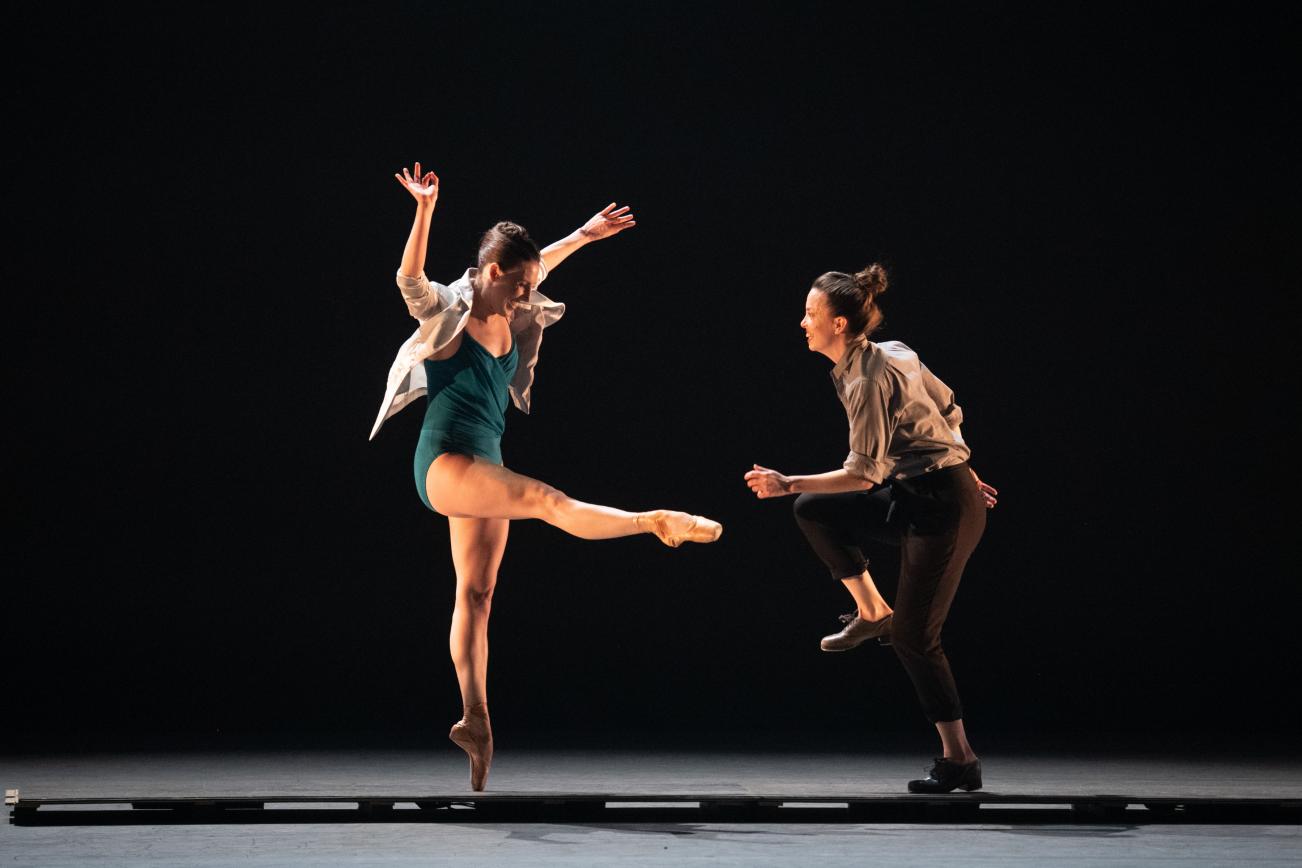| In “I AM,” she continues her signature interweaving of African diasporic dance forms, but with what seems like a greater, bolder openness to letting dance — in deep conversation with music — speak for itself. After Wednesday’s performance, she shared just a brief word of explanation: “I wanted to do something centered around joy.”
The joy that courses through “I AM” is not merely happy or celebratory; it’s more complex, multidimensional. It starts to simmer with the first sound of the drum, a marching-band roil that evolves into lush original arrangements of R&B, club and hip-hop classics. As the lights come up, pairs of dancers — anchored by the indefatigable Onyxx Noel and Destini Hendricks — come surging forward through a blanket of fog, imprinting the space with shimmying shoulders, thrusting chests, popping hips. It’s as if majorette dancing met Twyla Tharp’s “In the Upper Room,” and it’s electric.
The 12 sections of “I AM” somehow sustain this energy, with a few dips into gentler or sultrier moods. In “Throwback #1,” the charismatic Miki Michelle, flanked by two guys, could be the star of a ’90s music video. To a version of “Papa Was a Rollin’ Stone,” Curtis Thomas works himself into spiritual fervor, encouraged by his fellow dancers. In an ecstatic and tender duet, Brianna Dawkins and Courtney Ross are similarly overtaken by the music.
Gestures of praise appear often throughout the work — hearts lifted or fingers pointed to the sky — alongside flashes of Lindy Hop, voguing, stepping, breaking and a host of other styles and traditions. Geometric lighting projections create an atmosphere that is at once retro and futuristic. Especially in large-group sections, Brown organizes the space with an assuredness she has always possessed, but one that comes into even sharper focus here.
This goes for her own transporting solo, too. When she makes her entrance toward the end, the instrumental music momentarily gives way to a robotic, echoey voice, a reference to the HBO series “Lovecraft Country.” (“I AM” takes inspiration, and its title, from an episode of the show.) “Name yourself,” the voice says. “You are not in a prison.”
At first, Brown appears to balance vulnerability with self-protection, one hand reaching forward, palm open, the other pulled back in a fist. But as the solo progresses, she gives herself so fully over to the music, whether gobbling up the stage with big stomping steps or lyrically mirroring the violinist, she seems to inhabit an alternate plane — while also really having fun.
The joy of “I AM” is the joy of being entirely yourself, entirely present in the moment. We are here, Brown and the performers seem to say — and we’ll keep being here, together, dancing into the future.
|
.jpg)



.jpg)

